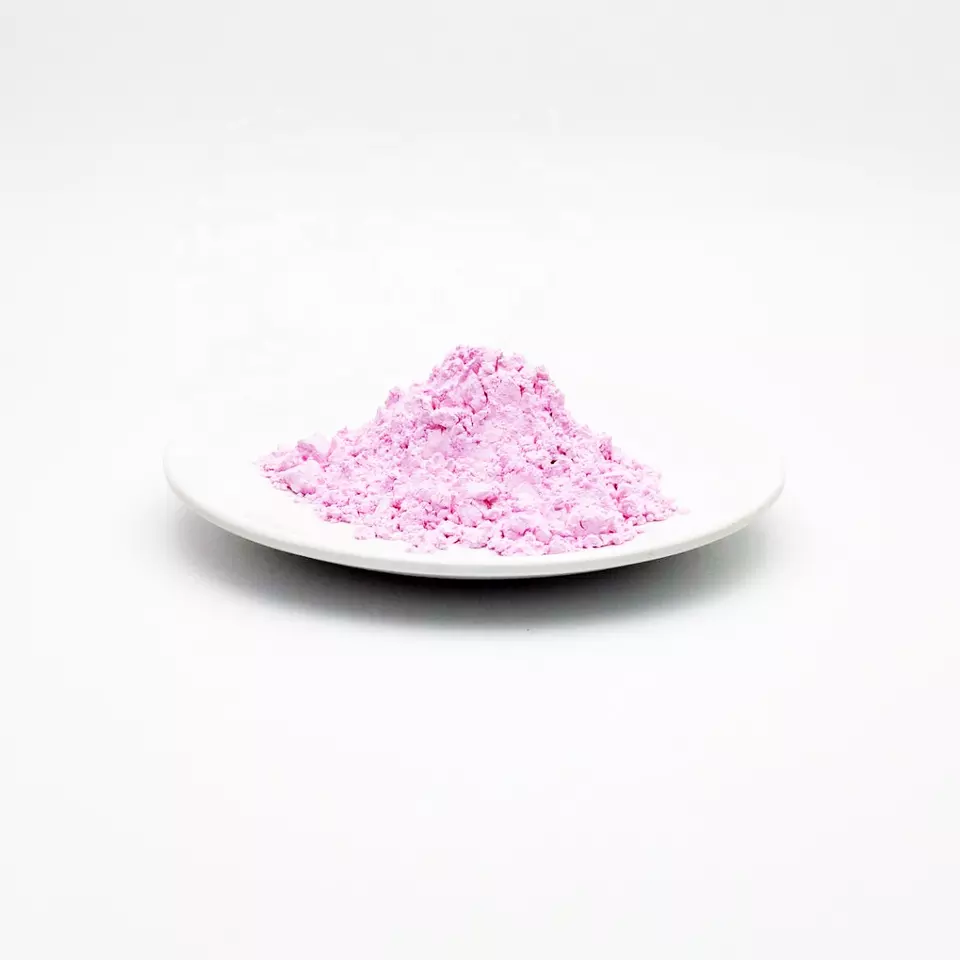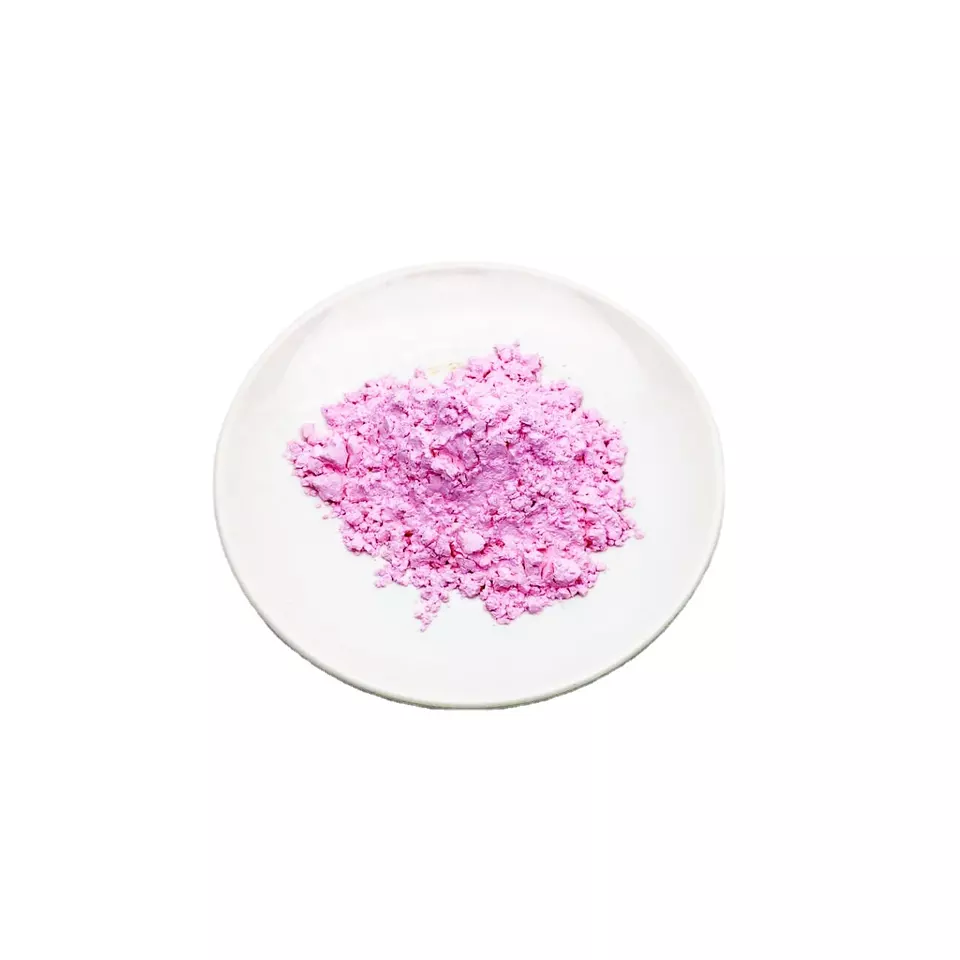Erbium oxide is a powdery substance with certain irritants and chemical activities
| Product name | Erbium oxide |
| MF | Er2O3 |
| CAS No | 12061-16-4 |
| EINECS | 235-045-7 |
| Purity | 99.5% 99.9%,99.99% |
| Molecular Weight | 382.56 |
| Density | 8.64 g/cm3 |
| Melting point | 2344° C |
| Boiling point | 3000℃ |
| Appearance | Pink powder |
| Solubility | Insoluble in water, moderately soluble in strong mineral acids |
| Multilingual | ErbiumOxid, Oxyde De Erbium, Oxido Del Erbio |
| Other name | Erbium(III) oxide; Erbium oxide REO rose powder; erbium(+3) cation; oxygen(-2) anion |
| Hs code | 2846901920 |
| Brand | Epoch |


Safety and Handling of Erbium Oxide: Best Practices and Precautions
Erbium oxide, while possessing remarkable utility in various technological applications, necessitates careful handling due to its potential hazards. This article outlines the essential safety precautions and best practices for working with erbium oxide, emphasizing responsible handling and storage procedures. Furthermore, it addresses the importance of sustainable practices in its production and use to mitigate environmental impact.
Understanding the Potential Hazards of Erbium Oxide: A Guide to Safe Handling and Storage
Erbium oxide, in its pure form, is generally considered to have relatively low toxicity. However, like many metal oxides, it can pose some health risks if mishandled. Inhalation of erbium oxide dust can irritate the respiratory tract, potentially leading to pulmonary issues with prolonged exposure. Furthermore, contact with skin or eyes may cause irritation. It is crucial to avoid ingestion of erbium oxide. Long-term exposure effects are still being investigated, so precautionary measures are paramount. Proper storage is equally important. Erbium oxide should be stored in tightly sealed containers in a cool, dry, and well-ventilated area, away from incompatible materials. A material safety data sheet (MSDS) should always be consulted for the most accurate and up-to-date safety information.
Best Practices for Working with Erbium Oxide: Ensuring Safety in Various Applications
When working with erbium oxide, employing appropriate personal protective equipment (PPE) is essential. This includes wearing respirators, safety glasses, and gloves to minimize exposure via inhalation, skin contact, and eye contact. Work should be conducted in well-ventilated areas, ideally under a fume hood, to control dust generation. If dust is unavoidable, a NIOSH-approved respirator is mandatory. Spills should be cleaned up immediately using a vacuum cleaner equipped with a HEPA filter or by carefully sweeping and containing the material. Wet sweeping is preferred to dry sweeping to minimize dust dispersion. All contaminated clothing should be removed and washed before reuse. Adherence to these best practices significantly reduces the risk of exposure and ensures a safe working environment.
Sustainable Practices in Erbium Oxide Production and Use: Minimizing Environmental Effects
The production of rare earth elements, including erbium, can have environmental implications. Mining and processing these elements can generate waste and release pollutants. Therefore, sustainable practices are crucial to minimize the environmental footprint. This includes optimizing extraction processes to reduce waste generation and improving recycling methods to recover valuable materials from spent products. Responsible disposal of erbium oxide-containing waste is also essential. Efforts are being made to develop more environmentally friendly methods for erbium oxide production, focusing on reducing energy consumption and minimizing the use of hazardous chemicals. By embracing these sustainable practices, the long-term viability of erbium oxide use can be ensured while protecting the environment. The lifecycle assessment of erbium oxide, from mining to disposal or recycling, should be considered to minimize its environmental impact.
Emergency response in case of contact
1.Skin contact: If erbium oxide comes into contact with the skin, rinse immediately with plenty of water for at least 15 minutes. If symptoms appear, seek medical attention immediately.
2.Eye contact: If erbium oxide enters the eyes, immediately rinse the eyes with plenty of water or saline solution for at least 15 minutes and seek medical attention.
3.Inhalation: If inhaling erbium oxide dust, the patient should be quickly transferred to fresh air, and if necessary, artificial respiration or oxygen therapy should be performed, and medical attention should be sought.
4.Leakage handling: When handling leaks, sufficient ventilation should be ensured to avoid dust formation, and appropriate tools should be used to clean and then transferred to a suitable container for disposal
Post time: Feb-11-2025